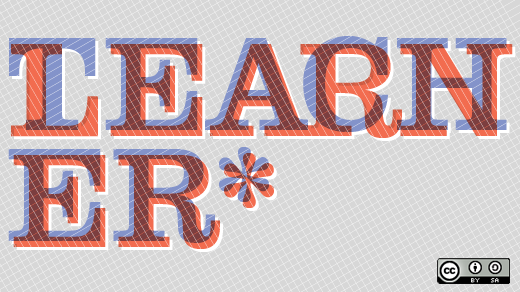On your commute to work, the tiny supercomputer in your pocket sends a podcast to the computer in the dashboard of your car. Although you're not driving a flying car yet, we're undeniably living in a new age in 2015, and we're starting to see some of our science fiction dreams come true.
Robots are taking care of the elderly, grabbing a cold beverage from the fridge, cleaning floors, and tending crops. Tiny quadcopter drones are flying in autonomous groups, flying above protests to gather news footage, some are even delivering flowers, pizza, and packages.
3D printers are building car parts, heart valves, toys, and functional prosthetic limbs. I'm printing a minion from Despicable Me from Thingiverse.com on the 3D printer at my desk as I write this essay.
I work at a university, in the computer science department, and my college-age students have access to all this technology and more. Imagine the things they're able to do and create—better yet, imagine the things they'll be able to do and create in five years with the next generation of all these technologies in the workplace and at home.
But think about what could happen if we made these tools available to younger students.
Starting younger
What if we became laser-focused on introducing children to bots, drones, 3D printers, and coding in high school… middle school… or even elementary school?
What if we exposed kindergartners to 3D printers alongside reading? What if we taught third-graders how to program mobile apps alongside multiplication? Could fifth-graders build and use Lego or Vex robots in science class? Could an eighth-grader use geometry and algebra to land a quadcopter on a platform in the middle of the football field? If so, we could raise a new generation of inventors, creators, makers, and problem-solvers.
Some schools, public libraries, and teachers are already leading the charge. Many school systems have made computer science classes available in middle school and high school. A few schools have integrated coding into the curriculum by using it as a tool in English, science, and math classes. I've worked with elementary, middle, and high-school students, and I've seen the light in kids' eyes when they realize they can make a computer print a 3D toy, program a bot to navigate a maze, or create their own drawing app for their phone or tablet.
Coding makes all of these activities possible—the hardware in a bot, drone, or 3D printer is amazing, but the software is what allows those objects to move, fly, and build. Coding is the problem-solving tool that's building better medical devices, faster methods of sharing ideas and products, and new ways of understanding the past.
Coding is also one of the hottest skill sets of the 21st century. According to the U.S. Bureau of Labor Statistic, seven of the top ten highest paying and fastest growing professions over the next five years are computing jobs. And let's face it, almost every job you want to do, or you want your kids to be able to do, involves technology in some way.
Why start so young? A growing body of research shows us that by middle school, a majority of children—and disproportionately girls—have decided not to work toward a STEM (science, technology, engineering and math) career. I believe that one way to gain and maintain the interest of young men and women in these critically needed fields is to let them learn not only how to interact with technology, but also how to control it with simple code starting as early as possible, and show them that they can use the latest technologies as problem-solving tools in any profession.
Not every person who learns coding needs to grow up to be a programmer, just like not every person who learns English has to be a writer, and not every person who learns math has to grow up to be an accountant. But coding is becoming such an important tool for solving problems in every profession, every walk of life, that I believe we are unconsciously holding back one of the most important modern literacies from our children by failing to integrate coding and computational thinking into the K-12 curriculum.
The good news is that there are more options these days for parents, teachers, and leaders who want to introduce coding to kids, from books to coding camps, after-school programs to web sites like Code.org and Codecademy.com. But we must do more.
Next steps
I'm advocating for coding and computer science to be included in the K-12 curriculum. My colleagues and I are looking for new ways to include coding and novel technologies like bots, drones, 3D printers, augmented reality, and virtual reality in our university-level teacher education programs. Teaching new teachers how to use technology in science, social studies, English, math, and the arts will make a difference, but it will take a full generation for that strategy alone to reach our kids.
The path to incorporating coding and other new technology into K-12 requires professionals who use technology to get involved with their local schools and demonstrate the impact these new tools are making in the world today. If you're someone who uses innovative technologies in the workplace, in creating art, or in changing the world, reach out to your local elementary school and offer to give a presentation at career day, or to students in a single classroom.
I'm also encouraging parents to think about bringing technology home. If a $350 Lego Mindstorms or Vex robotics kit is out of reach, consider the $49 Edison or $60 build-it-yourself Cannybots. For a low-cost first drone, check out the Cheerson CX10 mini quadcopters on Amazon for around $20. And, few families can shell out thousands for Makerbot or similar 3D printers, but Micro 3D has one for $349, and the Tiko came to life on Kickstarter for just $179.
The time to get started is now. Share some fascinating technology with young people in your life. Help expand their opportunities, and pave the way for a brighter tomorrow for us all.
School
This article is part of the Back to School series focused on open source projects and tools for students of all levels.







4 Comments